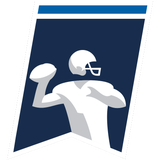ASHBURN, Va. — Each practice day, right around 6 a.m., Jayden Daniels’ phone rings.
Kliff Kingsbury is calling.
The Washington Commanders offensive coordinator is not placing a long-distance call.
Instead, Kingsbury calls his quarterback from the same indoor practice field at the same line of scrimmage. Kingsbury delivers a play-call to Daniels via headphones and awaits quarterbacks coach Tavita Pritchard snapping the ball in one hand while holding the day’s practice script in his other.
Advertisement
Advertisement
Advertisement
Advertisement
Kingsbury releases off the line of scrimmage, playing the role of Daniels’ receiver while continuing the conversation by phone.
“I’m talking to him as I’m running the route, saying, ‘Hey, if I’m covered …’” Kingsbury told Yahoo Sports. “Talking through how I see the game [to] get him comfortable before meetings.”
Sometimes, this early-morning session lasts 10 minutes. Other days, the trio breaks down the day’s call sheet for 30. They don’t miss a practice day.
“Super, super helpful. Super,” Daniels told Yahoo Sports. “I have a walkthrough before the walkthrough, where I already kind of been over it.”
Advertisement
Advertisement
Advertisement
Advertisement
Cue better clarity in team meetings and on gamedays.
[Join or create a Yahoo Fantasy Football league for the 2025 NFL season]
Word of Daniels’ work ethic and early-morning routines swept Commanders headquarters even before the club selected Daniels second overall in the 2024 NFL Draft. But Daniels didn’t know then that his coaches would be just as willing to arrive early for extra sessions. A quarterback-only walkthrough, every day at 6 a.m.?
Kingsbury and Pritchard had never done this prior in their coaching careers. Head coach Dan Quinn hadn’t known colleagues who did this in his three decades coaching, either.
Advertisement
Advertisement
Advertisement
Advertisement
So what?
With Washington’s coaching staff, front office and even team ownership turning over just before Daniels arrived, the opportunity to build a system together from the ground up was ripe. Forget preconceived notions and systems from past employment stops. The Commanders allowed Daniels, on several fronts, to set the tone.
“The convergence of all these things [that] were coming together at a time that you’ve got this really special moment,” Pritchard told Yahoo Sports. “You were able to just find this moment in time that we were able to create what we did.”
Washington Commanders offensive coordinator Kliff Kingsbury watches quarterback Jayden Daniels (5) practice on Aug. 4.
(The Washington Post via Getty Images)
Nominations for Yahoo Sports’ 25 Game Changers in 2025 considered: Who will influence the NFL in ways that force opponents to respond? Who will make their mark on the league in a manner that others will desire to emulate?
Advertisement
Advertisement
Advertisement
Advertisement
Daniels’ Offensive Rookie of the Year campaign and the Commanders’ first NFC championship berth in 33 years were proof positive that the Commanders’ project is working. But Daniels’ results are not the only reason he will influence the NFL in 2025 and beyond: The process that delivered those results is at least as interesting.
Teams will not find an exact replica of the quarterback who made the Commanders’ engine hum. But the infrastructure around Daniels has caught the attention of clubs determining how to mold their young quarterbacks, from the Tennessee Titans who drafted Cam Ward first overall this year to the Cleveland Browns who selected Dillon Gabriel in the third round and Shedeur Sanders in the fifth round of the 2025 NFL Draft.
Staff hires, extra walkthroughs and a calculated playbook progression contributed to Washington’s rapid turnaround. The Commanders modeled how to support and elevate a quarterback in a league where franchises often fail their most impactful player.
As Daniels considers his second act and looks to avoid a sophomore slump, coaches, players and executives across the league expect Daniels’ talent and an unusually solid coaching foundation to spark growth rather than regression.
Advertisement
Advertisement
Advertisement
Advertisement
“He’s a really good football player,” Philadelphia Eagles linebacker Zack Baun told Yahoo Sports. “He’s going to be really good for a really long time.
“I think he’s only going to get better.”
The ‘nice college offense’ that worked
Ahead of Daniels’ third-ever professional football game, Cincinnati Bengals cornerback Cam Taylor-Britt analyzed the quarterback he was preparing to face.
“They don’t make him do a lot, they keep it really simple for him,” Taylor-Britt told reporters last September. “His pass percentage is very high, but he’s only throwing short routes, intermediate, quick throws.”
Taylor-Britt’s assessment: The Commanders were running “a nice college offense.”
Taylor-Britt’s film study was accurate and seemingly well-intended. But his honesty generated headlines.
Advertisement
Advertisement
Advertisement
Advertisement
Was Daniels capable of only simplified college concepts? Was Kingsbury trusting his quarterback with only a limited playbook?
What many interpreted as a jab quickly became a reason the league praised the Commanders. Teams should build up their draft picks before rolling out the last page of their playbook, coaches and executives say.
“They didn’t put the game on him from the beginning of the year,” Browns general manager Andrew Berry told Yahoo Sports. “They gave him easy, quick completions to start the year. They spread it out. They used elements of his athleticism in the run game and then kind of used tempo to his advantage. And then, as the season progressed, they continued to put more and more on his plate.
“That deliberate on-ramping, so to speak, of young quarterbacks has been successful.”
Advertisement
Advertisement
Advertisement
Advertisement
The Commanders followed an opening-week loss with seven wins in their next eight tries by leaning heavily on concepts Daniels ran well at LSU, from the clapping cadence he and Kingsbury each appreciated to Daniels’ go-to Y-cross play featuring a tight end or slot receiver crossing underneath. They embraced tempo, their 61.5% no-huddle rate more than double the second-highest team and more than five times the league-average 12%.
As early as in pre-draft Zoom calls, Kingsbury rolled cutups of Daniels’ Heisman Trophy season at LSU and asked: What did you call this play? Tell me about your read here.
“Just trying to understand some of his preferences,” Pritchard said. “Starting to build the offense around him before he was even here.”
Jayden Daniels won his first two playoff games, both on the road, including a stunner against the No. 1 seed Detroit Lions. (Photo by Michael Owens/Getty Images)
(Michael Owens via Getty Images)
By the third quarter of the Commanders’ season opener against the Tampa Bay Buccaneers, Kingsbury dialed up Daniels’ comfort-zone Y-cross against a Todd Bowles pressure. A shifting defense didn’t rattle Daniels, who completed a 9-yard pass to Zach Ertz on a drive that Daniels capped by rushing for a touchdown.
Advertisement
Advertisement
Advertisement
Advertisement
Leaning on Daniels’ college strengths early built confidence. As the season progressed, the rookie no longer needed rookie treatment. Kingsbury reached deeper in his bag and set up plays that developed deeper downfield. Daniels established trust in his protection and himself, no longer leaving the pocket as hurriedly as he had in his 16-carry debut.
The quarterback whose first pro snap resulted in a backward pass and loss of 15 yards was soon burning opponents through the air and by ground. The Commanders went 12-5 after seven seasons without a winning record, beating the Buccaneers and Detroit Lions in the postseason before falling to the eventual Super Bowl champion Eagles.
Opponents and counterparts took notice.
“This kid throwing the ball, he knows how to play the position,” four-time MVP Aaron Rodgers told Yahoo Sports. “Because any great running quarterback, which he is, you got to be able to play from the pocket. And he’s accurate from the pocket.
Advertisement
Advertisement
Advertisement
Advertisement
“He plays the position fully.”
[Get more Commanders news: Washington team feed]
Opening the lines of communication
The Commanders were intentional about what they asked of Daniels and when.
They also were intentional about how they asked their quarterback to do anything.
Communication wasn’t just at a premium between 6 and 6:30 each morning. When Daniels broke for summer break before his rookie year, the Commanders coordinated with his private quarterbacks coach at 3DQB, Taylor Kelly.
Quinn’s relationship with 3DQB dated back to his time at the Atlanta Falcons helm, when Matt Ryan trained with the group. Pritchard knew Kelly from prior years recruiting Kelly’s high schoolers and coaching against his Arizona State players during Pritchard’s time at Stanford.
Advertisement
Advertisement
Advertisement
Advertisement
Trust buoyed collaboration. The Commanders and Kelly agreed to streamline the terminology of their drills and techniques, figuring the less Daniels was bogged down translating, the more bandwidth he’d have to improve.
“If you can kind of release your quarterback coach ego, ‘Oh, you need to do it my way,’… it really just matters what makes sense to the player,” Pritchard said. “What they talk about with body position on a followthrough with a throw or we call them cues.
“Whatever that little buzzword is, you can’t have a million of them in your head.”
Kelly trained Daniels from a tablet with Commanders intel, and he sent Daniels back with a 3DQB-designed “prehab” regiment of resistance bands and posterior chain warmups.
Advertisement
Advertisement
Advertisement
Advertisement
By season’s start, Daniels had a plan. And soon after, against the same Bengals team that questioned him, he found his rhythm.
Daniels passed for 3,568 yards and 25 touchdowns to just two interceptions as a rookie, also rushing for another 891 yards and six scores.
He took a Commanders team to the conference championship game, the club’s first appearance in his lifetime.
Why sophomore slump doesn’t worry Commanders
The NFL ecosystem often pays close attention to players’ second seasons. For quarterbacks especially, fans and franchises fear a sophomore slump. Will defenses “figure out” their guy after an offseason of study?
Advertisement
Advertisement
Advertisement
Advertisement
Quinn, meanwhile, has long trumpeted what he calls “the second-year jump.” He believes players discover weaknesses they need to correct during their rookie seasons, but the speed and volume of the season delay those corrections until the offseason. Afterward, their play elevates thanks to the second-year jump.
Yet Quinn doesn’t believe either paradigm perfectly contextualizes Daniels. Daniels and fellow 2024 draftee, cornerback Mike Sainristil, took their second-year jumps midway through their first seasons, Quinn says.
“They were able to self-correct themselves without having to wait ’til the offseason,” Quinn told Yahoo Sports.
The Commanders’ season-opening loss against Tampa and their wild-card win over Tampa paint a picture of the contrast. In the playoff game, the Commanders faced third-and-10 with 9:31 to go in the second quarter, down 3-0.
Advertisement
Advertisement
Advertisement
Advertisement
Daniels hung in the pocket for 4 seconds as receiver Dyami Brown’s in-cutting route developed, Daniels unfazed as Tampa linebacker YaYa Diaby approached for a low hit that was ultimately flagged as a roughing-the-passer penalty. No matter: Daniels completed the pass as Diaby dove toward him. The 10-yard touchdown throw gave Washington a 7-3 edge in what would become a 23-20 win.
“He ran like 15 times by himself when it wasn’t a called run [Week 1],” Kingsbury told Yahoo Sports. “And then we’d watch him that second time and he’s sitting in the pocket and he’s stepping up. He throws an in-cut late on the third-and-10 to Dyami that was unbelievable. He cut it loose early. And I’m like, ‘Yeah, to watch him come from Week 1 to that, it’s like a whole different guy.’”
Daniels said facing Tampa in the playoffs felt “20 times slower” than the season opener.
Advertisement
Advertisement
Advertisement
Advertisement
“My first game as a pro, you don’t know what to expect, so first playoff game was completely different than that,” Daniels told Yahoo Sports. “I was a rookie my first game. And I was a more seasoned rookie the second time we played.
“It just slowed down.”
A time and place for Superman
NFL brass looking to emulate the Commanders’ process and results will need to consider Daniels’ multifaceted skill set and Washington’s system devised to support it.
Washington drafted Daniels recognizing that a dual-threat quarterback creates mathematical problems for defenses. Quinn talks of the “plus-one” advantage Daniels creates when he can thwart opponents from the pocket or on the escape. Commanders brass wonder: Even if teams study Daniels well enough to learn his tendencies on-schedule, can off-schedule playmaking neutralize opponents’ curated strategies?
Advertisement
Advertisement
Advertisement
Advertisement
The Commanders hope also that Daniels can counter better-studied defenses with offseason improvements of the rookie weaknesses on which opponents would aim to capitalize.
Take Washington’s three-game November slump against the Pittsburgh Steelers, Eagles and Dallas Cowboys. Self-scouting pointed to the kryptonite of early-down sacks, Daniels taking eight of his 11 sacks in those three games on first or second down.
So coaches and the quarterback himself reminded Daniels: Don’t be Superman on early downs. Save the heroics for when they’re actually needed.
The second time the Commanders played the Eagles, Daniels checked his first third down to running back Brian Robinson Jr. Progress. The conservative decision didn’t keep him from converting multiple fourth downs with his legs later in the game.
Advertisement
Advertisement
Advertisement
Advertisement
“You get paid for third or fourth downs and red zone and two-minute drills,” Daniels said, referencing advice 15-year NFL quarterback Matt Ryan gave him. “Other than that, let the guys make the plays. But when it’s third or fourth down, that’s what you get paid for.”
Don’t expect the Commanders to overhaul the offensive framework that powered Daniels’ 3,568 yards and 25 touchdowns to two interceptions, nor to fully shut down the mobility that contributed another 891 yards and six touchdowns rushing in the regular season. Think of Year 2 as a better, more informed Year 1 for Daniels. Washington won’t change for the sake of change nor will it scrap what worked out of fear that opponents know it’s coming.
Advertisement
Advertisement
Advertisement
Advertisement
“It’s more trying to anticipate some of the things that defenses might do and having a counterpunch,” Pritchard said. “Still leaning strongly into [the] positive things from Year 1.
“It’s a balance.”
Teammates and opponents won’t be surprised to hear that Daniels, reputed as much for his jarringly even-keeled temperament as his ball skills, is not stressing about the pressure of expectations or the scouting reports of opponents.
“If you’re in Year 10, you got to prove yourself, and they have 10 years of film on you,” Daniels said. “You got to go out and prove yourself.”
He’ll instead keep waking up before sunrise, ready for his next 6 a.m. walkthrough. Daniels will answer Kingsbury’s calls, headphones ready to walk.
Advertisement
Advertisement
Advertisement
Advertisement
He plans to carry both for years to come.
So Daniels will keep waking up before sunrise, lining up ready for walkthroughs at 6 a.m. When his phone rings, he’ll answer the call from Kingsbury.
And if the Commanders’ plan continues to unfold, that won’t be the last call Daniels answers.
This news was originally published on this post .






Be the first to leave a comment